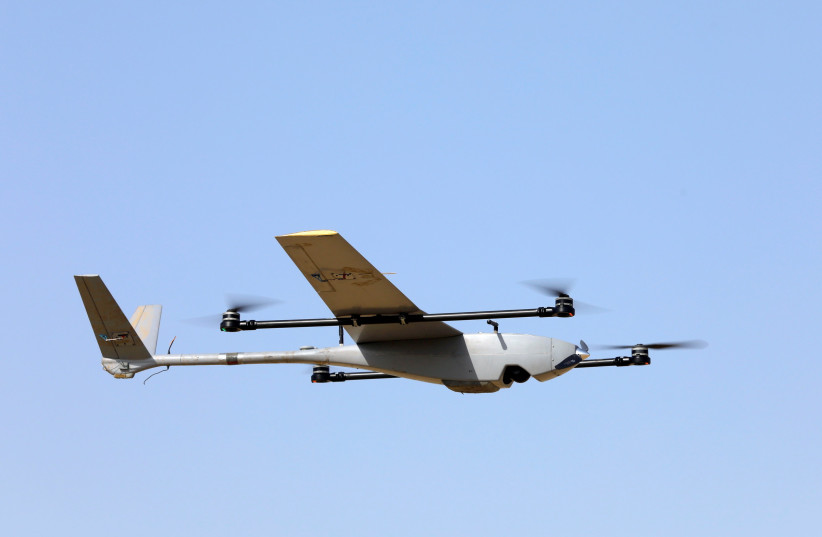Reports in the US say that Russia has acquired Iranian drones.
The reports appeared more than a month ago and now appear to include new details, such as Russia acquiring the Mohajer-6, Shahed 129 and Shahed 191 drones. The US also says Russia has already found Iran’s drones to be lacking, finding failures in the abilities of the drones. The news of the drone deliveries comes as Iran’s foreign minister is heading for Moscow this week.
Iran’s desire to export drones is clear. It has exported them to Venezuela and Ethiopia. It has also moved drone technology to militias and terrorists in the region such as Hamas, the Houthis, the Hashd in Iraq, and to other groups. It also established a factory to make drones in Tajikistan. Iran used drones against ISIS and also used drones to harass and threaten US forces in Syria in the last several years. It threatened the Tanf base using drones and also flew drones from the T-4 base in Syria in 2018. One of those drones was flown into Israeli airspace and shot down.
Iran has also flown drones from Iraq to threaten Israel and also to target US forces. In May 2021, Iran flew a drone from Iraq toward Israel and in mid-August this year it used a drone from Iraq to target US forces in Syria. Iran also used drones to attack Saudi Arabia in September 2019 and also to attack a ship in the Gulf of Oman in July 2021.
Last year, Israel revealed that Iran was training operatives in drones at several sites in Iran, including the Kashan air base. US reports say that Russia sent a delegation in June to Kashan to view Iran’s drones. National Security Advisor Jake Sullivan said, "we have information that the Iranian government is preparing to provide Russia with several hundred UAVs, including weapons-capable UAVs.”
Now the reports say that the drones have been transferred to Iran. US media such as The Washington Post, Wall Street Journal, New York Times and CNN have all reported these important developments. In addition, the Journal recently ran a story about Iran and Russia forming a closer alliance. Ukrainian media Defense Express also recently reported on photos from an Iranian drone drill in which Iran armed drones with missiles. Everyone is focused on the Iranian drones but there are also questions about whether the drones are as capable as Iran says they are.

What do we know about the Iranian drones?
What we know about the Mohajer and Shahed series is that Iran has used many of these drones over the years and developed them into a production line.
Iran usually copies foreign drones in order to develop successful airframes. That means that its drones sometimes appear similar to US Predators, or the Israeli Hermes, Eitan or Heron drones. Iran, however, has had more success with its kamikaze drones than with its armed drones that can return to base.
Russia would prefer to have the larger and medium-sized Iranian drones that can be flown and controlled by operators and return to base. This means that Russia isn’t like a customer such as the Houthis or Hamas in wanting token drones to wreak havoc. Russia likely wants the drones to provide a kind of instant air force for its front-line troops, without having to commit its own air force.
What if the drones don’t perform as well as Russia hopes they will?
Russia could be acquiring the drones as a symbol of Iran-Russia ties and then use them as a bargaining chip to get Iran to give Russia some concessions. Iran is talking with the west about a return to the Iran deal, this means Russia could have interests in sanctions relief.
However, if the US reports are accurate and Russia now has several types of Iranian drones and wants to acquire hundreds of them, that could help Iran standardize and improve its drone industry. For instance, Russia has in the past sought to establish its own drone industry by learning from foreign drones that exist, such as the IAI Searcher and other models. Russia’s drone arm has been very small compared to the US, Israel, China, Turkey, Iran and other drone operators.
Russia’s failure to field a drone force has thus led it into the arms of Iran. Iranian drones could be good for short-range surveillance over the Donbas or on the Kherson front. It could also use drones on kamikaze missions or use them as decoys or use them to try to find key Iranian targets, such as the US-supplied HIMARs. Or they could be a symbolic use system; something that Russia tinkers with to give Iran some information on how to improve them.
Iran’s foreign minister went to Moscow just as the news of the drone deliveries broke. Supposedly he is there to help “resolve” the Ukraine crisis. But if Iran is supplying Russia with weapons then it is not helping solve the crisis, it is fueling it.
